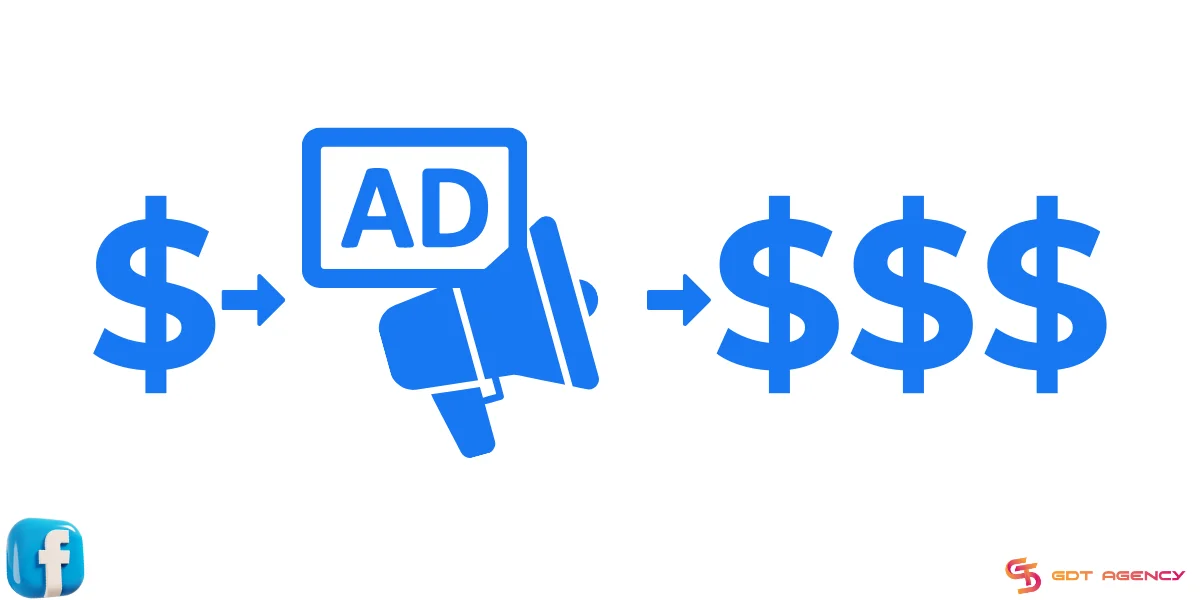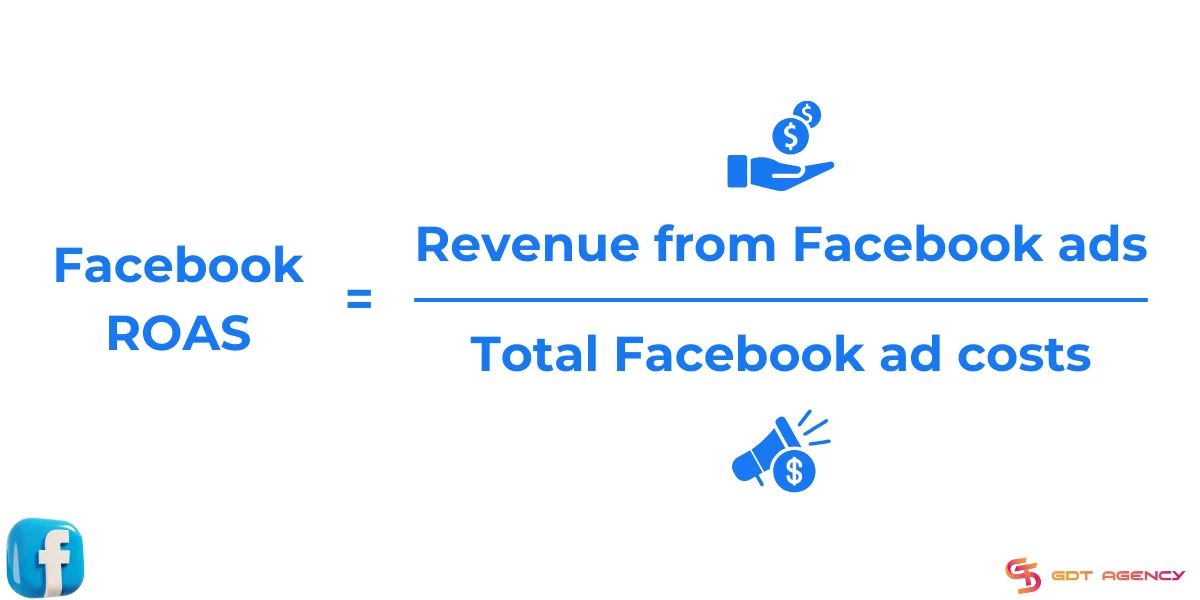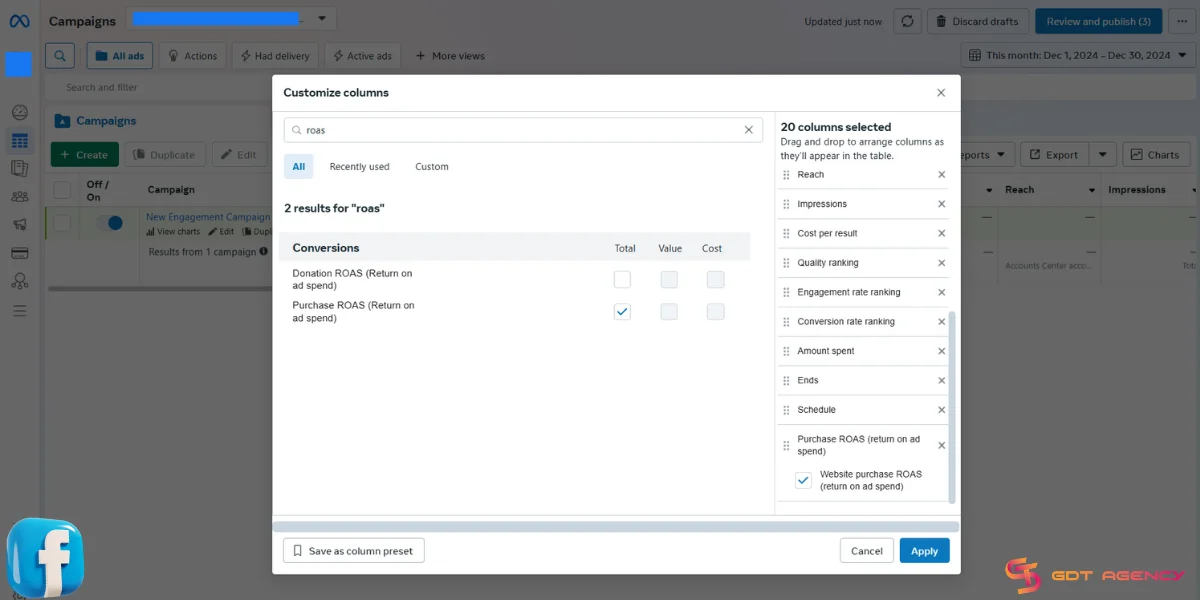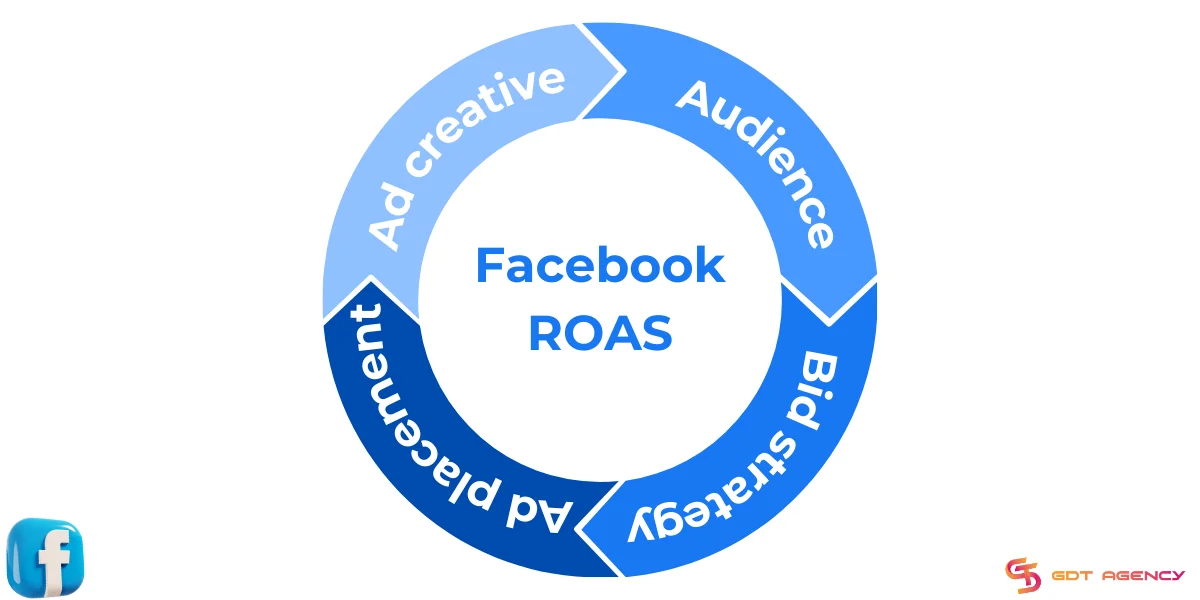What Is Facebook Return On Ad Spend? 9 Tips To Boost Your ROAS

If you’ve been running Facebook ads, you must have heard of ROAS (return on ad spend). Facebook return on ad spend is a vital metric to measure your campaigns’ success. By improving this metric, you can stay profitable and thrive in the dynamic world of Facebook ads. In this blog, I will dissect Facebook ROAS, and guide you on how to boost your return on Facebook ads with proven tips.

What Is Facebook Return On Ad Spend?
Return on ad spend (ROAS) is a metric in Facebook ads. It measures how much money you earn per dollar spent on Facebook ads. This metric lets advertisers understand which campaigns or ads work or not.
ROAS is usually expressed as a ratio or a percentage. The higher the ratio is, the more successful your campaigns are.
For example: If you spend $1,500 to promote your app with Facebook ads and gain $6,000, your ROAS would be 4:1. So for each dollar you spend on ads, you can get $4 in revenue.
Why Does ROAS Matter In Facebook Ads?

Return on ad spend is important in Facebook ads because it directly measures the efficacy of your campaigns. Here’s why it matters:
Evaluate campaign performance
ROAS is one of the key ad metrics to track and evaluate the performance of campaigns, ad sets, and ads. By assessing this metric, you can identify which ones to scale, and which ones should be adjusted or paused.
Maximize profitability
Facebook ROAS can tell how much money you make for every buck spent on ads. Higher ROAS means your campaigns are profitable. By analyzing ROAS, you can identify which one drives the most profits to focus on.
Optimize budget allocation
ROAS also plays an important role in budget allocation optimization. By understanding which campaigns are performing well and which are not, you can distribute your budgets appropriately.
How To Calculate Your Return On Facebook Ad Spend

You can calculate your Facebook ROAS using this formula:
Facebook ROAS = Revenue from Facebook ads / Total Facebook ad costs
To measure your ROAS, you must be able to track purchases generated from Facebook ads by setting up a Facebook (Meta) pixel on your website.
How To See Your ROAS On Facebook Ads

You can easily view your Facebook ad ROAS in Ads Manager by following these steps:
- Go to Facebook Ads Manager.
- Click Columns to open the dropdown menu.
- Select Customize columns.
- Under Conversions, expand Standard events and select return on ad spend. You can also type return on ad spend in the search bar.
- Select Purchase ROAS (return on ad spend).
- Hit Apply to save your changes.
Now you can get real-time reports and save time calculating your ROAS.
What Is A Good ROAS For Facebook Ads?

There’s no fixed answer on the good Facebook ROAS for businesses. It depends on multiple factors, including your industry, profit margin, and business goals.
A good Facebook ROAS typically should be at least 2:1 to 4:1, but it can be lower for certain industries like food and beverage or pet supplies.
A benchmark report from Triple Whale showed the average ROAS by industry in December 2024 as follows:
| Industry | ROAS |
| Art | 1.99 |
| Baby | 2.06 |
| Books | 2.44 |
| Clothing | 2.20 |
| Electronics | 2.19 |
| Fashion Accessories | 3.05 |
| Food & Beverage | 1.83 |
| Health & Beauty | 2.89 |
| Home & Garden | 3.15 |
| Pet Supplies | 1.95 |
| Sporting Goods | 3.90 |
| Toys & Hobbies | 2.71 |
However, the target ROAS can vary between businesses:
- Cash-strapped start-ups that need a higher profit margin: Those companies may require a higher ROAS, such as 10:1, to ensure their profit.
- Online stores committed to growth: Those businesses can withstand higher advertising costs and a lower ROAS like 3:1.
Businesses can only set their target ROAS after defining their budget and profit margin. With a large profit margin, they can afford a low ROAS. In contrast, businesses with a narrow profit margin must keep low ad costs.
4 Factors That Affect Facebook Return On Ad Spend

To optimize your ROAS for Facebook ads, you need to understand 4 relevant factors:
Ad creative
The more compelling and professional your ads are, the more people interact and purchase from them.
High-quality images, engaging videos, and persuasive content are the keys to enhancing Facebook ad performance and ROAS.
Example: An online clothing store creates high-quality videos showcasing their products on models. They highlight the material, form, and style of each item. They cooperate with influencers to attract more eyeballs. As a result, their ad campaigns get higher CTR and more sales. Their ROAS is significantly improved.
Target audience
Target audience is one of the most important factors. If you show your ads to the right people, they will be more likely to convert. For example, advertising golf clubs to golf lovers will be more effective than to those who are not interested in this sport.
Example: A sporting goods company realizes its ads don’t perform well because they are targeting a broad audience. After analysis, they define their target audience as men between 25 and 45, sports lovers. They change their ads to focus on this audience group, using relevant images and messages to customers’ hobbies and needs—finally, their conversions and ROAS surge.
Bid strategy
In Facebook ads, you have to compete with other advertisers. Having an appropriate bid strategy can help you gain good placements to advertise, reach potential customers, and optimize costs.
Ad placement
Choosing the right ad placement is also crucial. Different placements have different costs and efficiency. Placements suitable for business objectives and audiences can improve your ROAS.
Example: An online retail store wants to test different ad placements on Facebook. They create several ad sets and put them on different placements such as news feeds, stories, and the marketplace. After 1 month, they notice that story ads are cheaper and drive a higher conversion rate compared to others.
>>>Read More: Why Are My Facebook Ads Not Spending? How To Fix It Quickly?
How To Increase ROAS For Facebook Ads?

Here are some best practices to optimize your Facebook return on ad spend.
Articulate clear objectives
Set the right campaign objective before launching ads. It will dictate how Facebook optimizes ad delivery and bidding strategies to align with your ROAS goals.
Know your target audience
Stop wasting your ad budget on people who are not going to convert. You should know and understand your target audience, their demographics, interests, behaviors, etc.
You should also identify their pain points to make relevant content that speaks to their souls. This will optimize your CTR and ROAS.
Work on your ad creative
How you present your message to your audience can significantly affect your ad performance and ROAS.
Try to make high-quality ad creatives with eye-catching images, well-edited videos, and compelling ad copy. Start with an effective hook to captivate attention. Keep your content concise to hold viewers. Additionally, you can offer something of value to convert them to customers.
Optimize your landing pages
If you have good ads that drive clicks but bad landing pages, you might still receive low conversion rates and ROAS.
Review your landing pages, and ensure they are fast-loading (in no more than 3 seconds), mobile-friendly, relevant to ads, and optimized for conversions.
Track ROAS along with other metrics
Don’t just track your ROAS, make sure you also track other metrics like CTR, CPC, CPM, conversion rate, and CPA to have the big picture of how good your ads are or what needs improvements.
Keep testing and optimizing
Test with different ad creatives, audiences, bid strategies, or placements, to find what works for campaigns. Based on the metrics that I mentioned above, you can discontinue low-performing ads and optimize ads for better ROAS and performance.
Retarget your audience
Retargeting ads are highly effective in saving ad costs and boosting ROAS. Take chances to retarget people who have interacted with your business or forgotten your product in their carts.
Use ad scheduling
With Facebook ad scheduling, you can ensure your ads are shown to people at their most responsive times. Thus, you can receive higher engagement, reduce ad costs, and maximize ROAS.
Create a lookalike audience
Lookalike audiences play as a great way to find new potential customers with similar characteristics as your existing ones. They are more likely to convert than a broad audience, thus can help increase your ROAS.
>>> Related article: Amount Spent On Facebook Ads: Expert Guide To Master It 2025
Conclusion
Facebook return on ad spend is a crucial metric that businesses should not miss when strategizing and executing their campaigns. By understanding the nature of ROAS calculations and implementing practical tips outlined in this article, you can optimize your ads and get profits.
While Facebook ROAS is a valuable metric, it may not fully reflect the impact of campaigns in different customer journey stages, like awareness or consideration. Therefore, it’s important to track it alongside other key metrics to make informed decisions and optimize the effectiveness of your campaigns.
Are you interested in discovering more Facebook ad practices, or interested in using Agency Accounts? Follow GDT Agency for the latest updates!
Was this helpful?
You can contact us, with our experience in successfully deploying thousands of conversion advertising campaigns, GDT Agency confidently believes we can help you optimize effectiveness and maximize cost savings with advertising operations.






